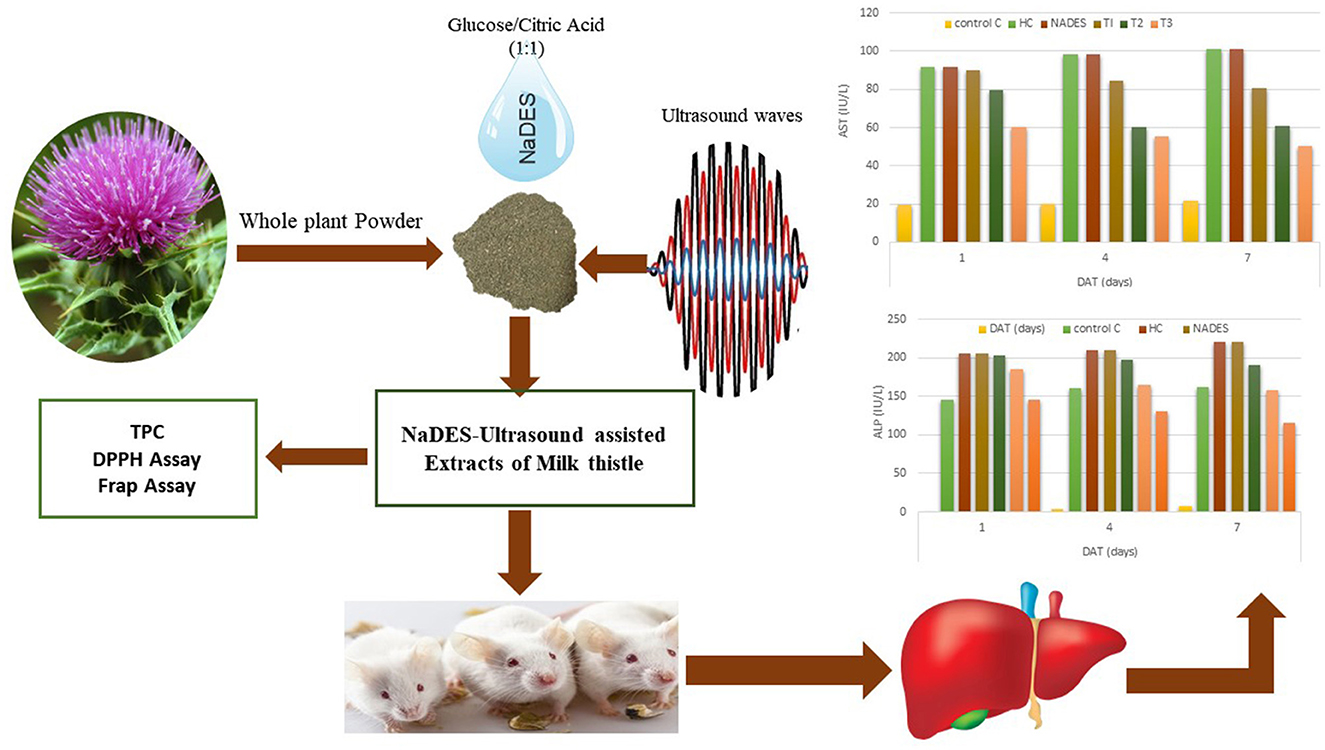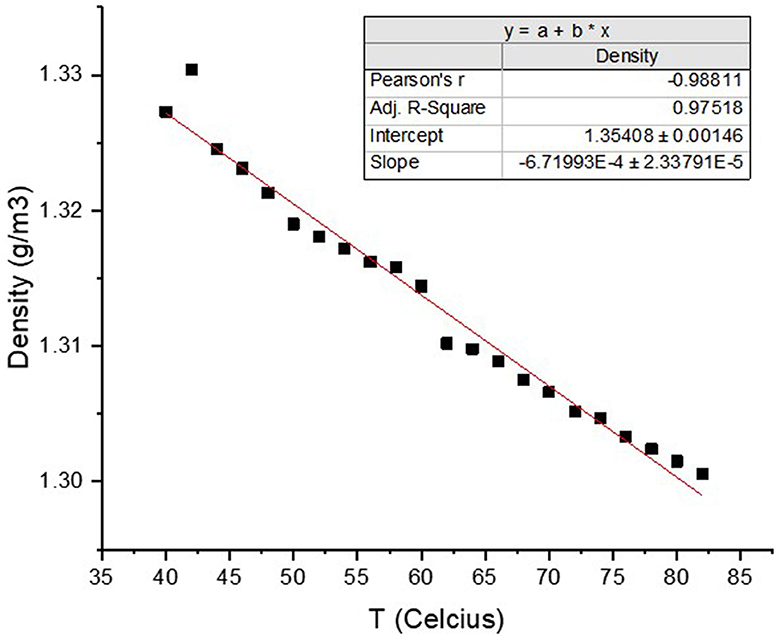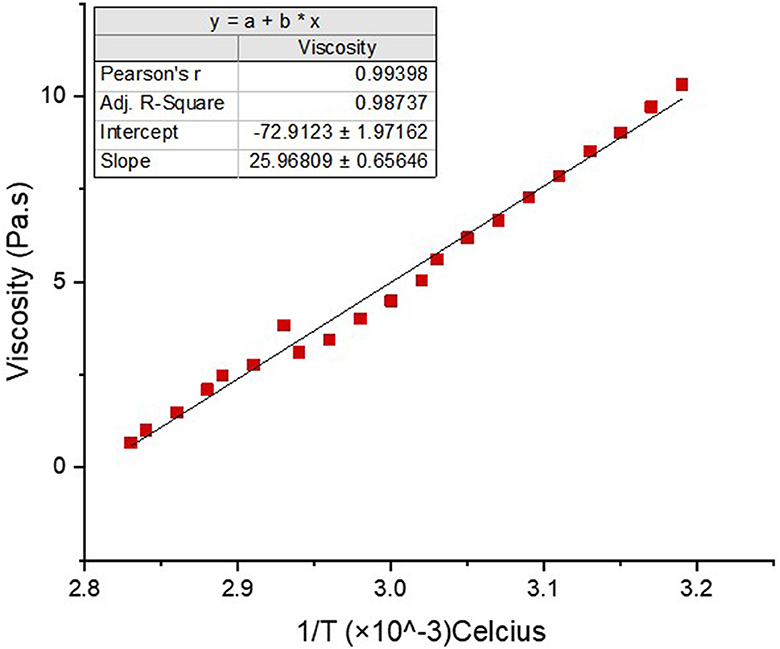- 1Department of Chemistry, Government College University, Lahore, Pakistan
- 2Division of Science and Technology, University of Education, Lahore, Pakistan
Introduction: The present research describes the utilization of natural deep eutectic solvent in combination with ultrasound for the extraction of milk thistle polyphenols. The extracts obtained under different conditions were evaluated for their in vitro antioxidant activities and hepatoprotective activities in Albino mice (in vivo).
Methods: The extraction parameters involving liquid-to-solid ratio (S/L), ethanol-to-natural deep eutectic solvent ratio (EtOH/DES), extraction time (t), and ultrasound treatment time were investigated and optimized to enhance the recovery of bioactives, their phenolic content, Trolox equivalent antioxidant capacity (TEAC), and radical scavenging capacity (RSC).
Results and discussions: The extraction of milk thistle polyphenols using glucose/citric acid (1:1)-based natural deep eutectic liquid coupled with ultrasound for 1.0 min under an S/L of 6.2, EtOH/DES 9, and extraction time of 120.8 min offered 35.89 ± 2.29 g/100 g of crude extracts, which were three-fold higher than that by conventional solvent extraction (CSE). Each gram of milk thistle extracts thus obtained comprised 377.93 ± 6.17 mg GAE of TPC and exhibited 298.70 ± 3.06 μmol TEAC and 93.16 ± 0.58 percent inhibition of DPPH free radicals. In addition, the administration of milk thistle extracts obtained as given above at 25 mg/Kg body weight in Albino mice significantly (p ≤ 0.05) improved the liver function parameters at the end of treatment (7 days).
Conclusion: Overall, it was observed that NaDES in combination with medium-level ultrasound energy (700 watt) might work as a sustainable choice to enhance the recovery of bioactive phenolics from milk thistle powder without compromising their antioxidant and hepatoprotective potential.
1 Introduction
A botanical herb Silybum marianum of the family Asteraceae commonly documented as milk thistle (Li et al., 2012) is an overriding medicinal herb grown for its folk medicine applications (Arts and Hollman, 2005). Milk thistle comprises total proteins 23%, carbohydrates 85%, crude fiber 5 %, ash 2 %, moisture 4%, and about 25 % oil (Khan et al., 2007) and other active constituents such as silybins (Ihsan et al., 2021), betaine, silybonol, and apigenin (Kiradoo and Srivastava, 2010). A keen review of previously published reports established that milk thistle can function as a rich source of potential phytochemicals (Acosta-Estrada et al., 2014) useful to manage the different infectious diseases, particularly liver and spleen disorders, lung, liver, and kidney ailments, migraine, hypocholesterolemia, gastrointestinal infections, seasonal allergies, mushroom poisoning, and Alzheimer's disease (Corchete, 2008; Zamora-Ros et al., 2013). Concurrently, awareness regarding the potential health benefits of diets rich in phenolic antioxidants has triggered pressure on the food and pharmaceutical industry to explore a sustainable pool of these valued bioactives and/or innovate more selective, efficient, and sustainable extraction/separation techniques. A large number of attempts have been initiated to introduce sustainable and green extraction solvents (Hajimahmoodi et al., 2008; Qu et al., 2010; Rababah et al., 2010), ultrasound and microwave pre-treatments (Adam et al., 2009; Abderrahim et al., 2011; Stavikova et al., 2011), enzymatic maceration (Luo et al., 2009; Mushtaq et al., 2014), and ohmic heating (Andrade et al., 2012; Bimakr et al., 2013) to extract natural phenolics. Recently, Mukhtar et al. (2023) found that soaking milk thistle powder with aqueous ethanol (80/20) at a solid-to-liquid ratio of 1:10 and temperature of 70°C for 60 min recovered 70 % of spiked phenolics. In another study, Tohamy et al. (2023) soaked milk thistle in enzymes and applied ultrasound wave-based agitation to enhance the mass transfer of phenolics.
Natural deep eutectic solvents (NaDES) have recently gained prominence in the search for both novel and ground-breaking materials to fulfill the demands of the modern era and sustainable environmentally efficient operations including but not limited to conversion of biomass (Basak et al., 2022), electroplating (Smith et al., 2014), metallurgy, and electronics (Smith et al., 2014). A large number of publications discuss the use of these liquids as a sustainable substitute for volatile organic solvents and even ionic liquids. Saien et al. (2023) applied natural deep eutectic solvents made up of octanoic and dodecanoic acid (1:1) for the green extraction of phenol from an aqueous medium. Ojeda et al. (2023) enhanced the extraction of phenolics from the peel and seed of mango three and five times, respectively, while applying DES as an extraction solvent and ultrasound as an agitation source. Mushtaq et al. (2022) have found that extraction of polyphenols while applying NaDES needs a thorough characterization of the viscosity/density of subject DES and careful optimization of extraction parameters. A mathematical and statistical approach “Response Surface Methodology” (RSM) has been frequently used to optimize the reaction parameters when single or multiple responses are affected by several variables in comparison to the classical approach which inspects the experimental conditions affected by only one parameter at a time keeping the remaining ones intact (Kumar et al., 2023).
The present research aimed to evaluate the effectiveness of an NaDES made up of glucose (Glu) and citric acid (CA) at a ratio of 1:1 for the extraction of phenolic compounds from milk thistle whole plant powder without affecting their structures and composition. The factors affecting the extraction efficiency like solid–liquid ratio, the density/viscosity (modified by ethanol mixing), ultrasound treatment, and extraction time were investigated and optimized. The efficiency of the extraction technique was assessed by measuring the total phenolic content (TPC) against applied extraction conditions. For the quality characterization, the extracts obtained with the highest TPC were processed to radical scavenging activity and reducing power in vitro antioxidant assays. Finally, the milk thistle extracts rich in TPC were evaluated for their hepatoprotective potential which was assessed via in vivo trials on Swiss Albino mice.
2 Materials and methods
The work related to the preparation and physiochemical characterization of NaDES, its utilization for the extraction of phenolic compounds, and the characterization of extracts obtained under optimum conditions was performed in the Biochemistry Laboratory, Department of Chemistry, Government College University Lahore (GCUL). The in vivo trial was conducted in the animal house of the University of Veterinary and Animal Science (UVAS) and Sheik Zayed Hospital Lahore-Pakistan. The antioxidant activities were carried out in the Department of Biochemistry, University of Agriculture, Faisalabad-Pakistan. The Institutional Ethical Committee of GCUL approved the trial layout and experimental design vide notification No. GCU-IIB-2597, dated 31st October 2022.
2.1 Plant material
Milk thistle plants were collected from Khunjirab Gilgit Baltistan, Pakistan. The whole plants comprising leaves, flowers, and stems were dried at room temperature until there was no further weight loss. The dried whole plant was pulverized into coarse milk thistle powder (MTP) with a pestle and mortar to a mesh size of 1 mm and stored in air-tight PET bags for further processing.
2.2 Selection of animals
The Swiss Albino mice of age 5–9 weeks and weight 21–25 g were supplied by F.Z. Traders (Lahore, Pakistan). All the mice were kept on the same diet comprising 60 % starch, 10% protein, 10% fat, 5 % cellulose, and 4% salts.
2.3 Procurement of reagents and chemicals
The reagents like 2,2-azino-bis-(3-ethylbenzothiazoline-6-sulfonic acid) diammonium salt (ABTS; 98 %), 2,2-diphenyl-1-(2,4,6-trinitrophenyl) hydrazyl radical (DPPH; 95%), 6-hydroxy-2,5,7,8-tetramethylchromane-2-carboxylic acid (Trolox; 95 %), Folin–Ciocalteu reagent (FCR; 2M), and 2,6-di-tert-butyl-4-methylphenol (BHT; 98 %) were procured from Sigma, St. Louis (USA). Chemicals including glucose (Glu), citric acid (CA), ethanol (EtOH), ammonium thiocyanate, potassium persulfate, potassium ferrocyanide, sodium carbonate, carbon tetrachloride (CCl4; 99%), and acetic acid were supplied by Merck (Darmstadt, Germany). Ultrapure deionized water was procured from the Milli-Q Plus system (Millipore, Bedford, MA, USA), whereas 96-well microplates used were from Fisher Scientific (Pittsburgh, PA, USA).
2.4 Preparation and selection of NaDES
We have prepared three natural deep eutectic solvents, i.e., (i) glucose/citric acid (1:1), choline chloride/urea (1:2), and glucose/fructose (1:1) by stirring the abovementioned molar ratio of HBDs and HBAs under vacuum at 45°C until a clear solution of DES is formed. All the NaDES were subjected to physiochemical characterization, and only glucose/citric acid NaDES was found suitable for the extraction of phenolics. The choline chloride and urea produced an unpleasant odor, whereas glucose/fructose was very dense and thermally unstable.
2.5 Experimental design
These extraction parameters including L/S ratios (A), ethanol (EtOH)/DES (B), extraction time (C), and ultrasound treatment time (D) were tested at five different levels (Table 1) for the recovery of bioactive form milk thistle powder (MTP). Five replicate runs at center points helped us estimate the main effects and pure error. All the responses were modeled following second-order polynomial (Equation a) (Morelli and Prado, 2012).
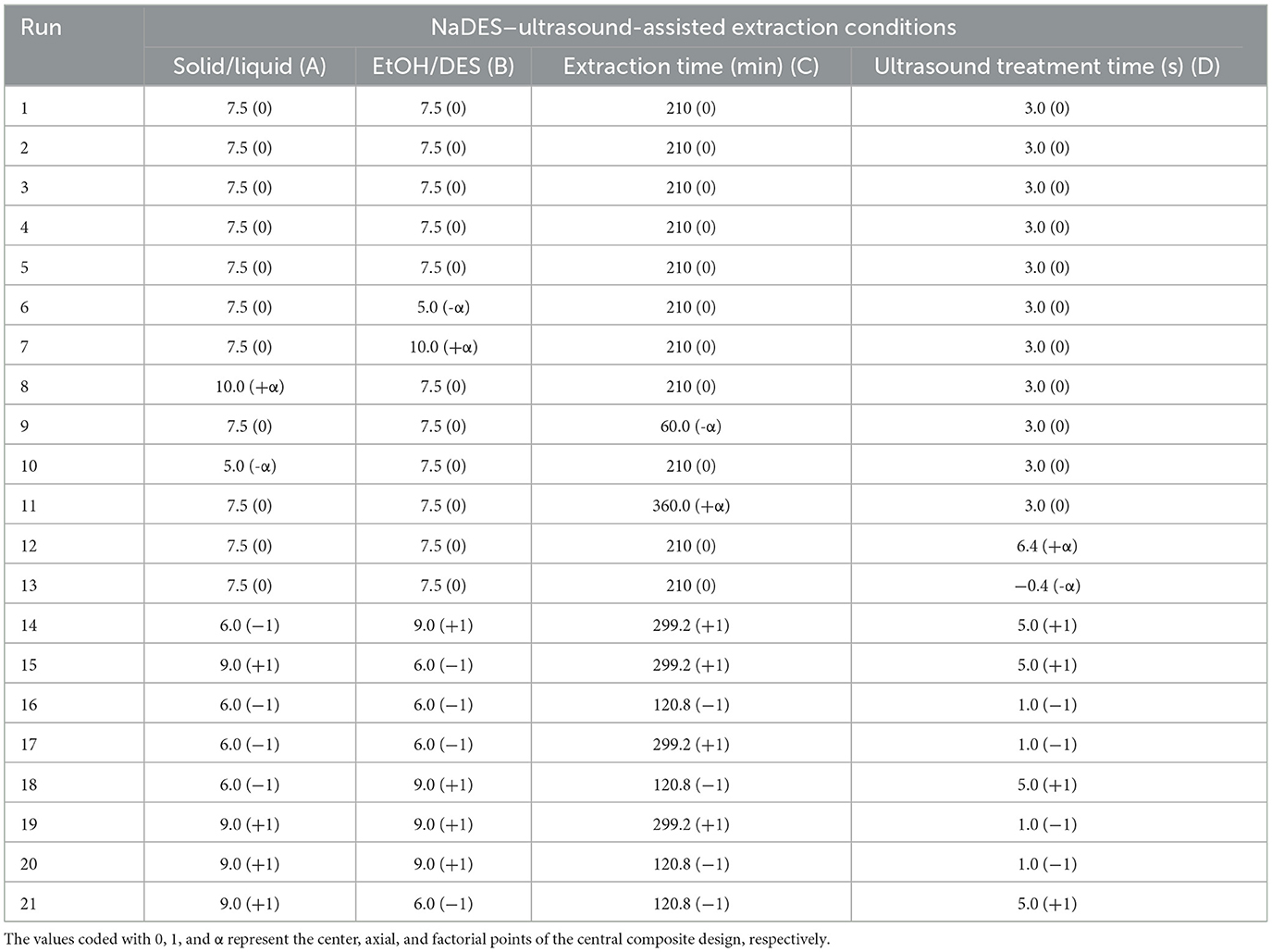
Table 1. Factors applied for NaDES–ultrasound-assisted extraction of phenolics from milk thistle powder.
where terms Y, β0, , denote responses to be optimized, intercept, linear effect of variables, quadratic effect, the interaction between different parameters, and residuals, respectively.
2.6 Extraction procedure
For the NaDES–ultrasound-assisted extraction, 5 g of MTP was mixed with different volumes of Glu-CA DES having variable amounts of ethanol (EtOH), as indicated in Table 1. The mixture was blended in an orbital shaker (Gallenkamp, UK) for a particular time and subsequently subjected to microwave at 700 watts (Table 1). For comparison, the same amount of the sample was processed for conventional solvent extraction (CSE) by applying a 100-mL mixture of EtOH and H2O (80:20). The discharged crude extracts were dried by using a rotary evaporator (EYELA, N-N series, Tokyo, Japan) under reduced pressure. The dried extracts were weighed to calculate the percent extraction yield.
2.7 Total phenolic contents (TPC)
TPC in the extracts obtained by NaDES–ultrasound-assisted extraction and CSE were assessed using the Folin–Ciocalteu reagent (Saeed et al., 2012). Briefly, 5 mg of dry mass of the MTP extract was mixed with 0.5 mL of the Folin–Ciocalteu reagent and 7.5 mL of deionized water. The mixture was kept at room temperature for 10 min, and then 1.5 mL of 20% sodium carbonate (w/v) was added. The mixture was heated in a water bath at 40°C for 20 min and then cooled in an ice bath; the absorbance was measured at 755 nm by using a spectrophotometer (Biotek-MQX- 200, Biotek Ind., Highland Park, USA). Amounts of TPC were calculated using a gallic acid calibration curve (Equation b) within the range of 10–100 ppm (R2 = 0.9861).
Here, A denotes the absorbance of samples and 2 is the dilution factor. The results were expressed as gallic acid equivalents (GAE)/g of MTP. All samples were analyzed three times, and the results were reported as mean ± SEM.
2.8 DPPH radical scavenging assay
The free radical scavenging activity of milk thistle extract (MTE) was assessed using the procedure described by Kedare and Singh (2011). In this assay, 100 μL of 500, 250, 100, 10, and 1 ppm MTP extract was prepared by serial dilution and mixed with an equal volume of freshly prepared 1,000 PPM DPPH solution in a 96-well plate. The plate was held in the dark at 35°C for 10 min. The percentage inhibition of DPPH radicals by the MTP extract was then calculated using Equation (c), in which A denotes the absorbance of the samples and control at 517 nm (MQX-200, Biotek Ind., Highland Park, USA).
2.9 Trolox equivalent antioxidant capacity assay (TEAC)
The antioxidant potential of extracts was assessed in terms of TEAC following a previously described method (Anh-Dao et al., 2024). Trolox (a known antioxidant) was used as a positive control, and the antioxidant potential was expressed as μmol of Trolox/g of the milk thistle extract.
2.10 Hepatoprotective activity
The hepatoprotective activity of the milk thistle extract obtained under optimum conditions was assessed following the method documented by Natanzi et al. (2009). In brief, 24 Albino mice were divided into six different groups: one healthy (n = 4), one hepatic (n = 4), one NaDES (n = 4), and three treatment groups (n = 12). The treatment group mice were administered with 1.5 mL CCl4 in olive oil/kg of body weight, whereas the healthy group received only vehicle (olive oil). The treatment groups T1, T2, and T3, were administered with 10, 25, and 50 mg of extract/Kg body weight (bw) of mice, respectively. Finally, blood samples were collected in heparinized capillary vials, centrifuged at 300 g for 10 min, and then clear plasma was obtained. The liver and kidney function biomarkers like serum aspartate transaminase (AST), alanine transaminase (ALT), albumin, alkaline phosphates (ALP), and total proteins (TPs) were monitored at the first, fourth, and seventh day after treatment (DAT).
2.11 Statistical analysis
All the responses including extract yield (yield), total phenolic content (TPC), Trolox equivalent antioxidant capacity (TEAC), and DPPH radical scavenging capacity (RSC) were observed under the conditions given in Table 1. The analysis of variance for the extraction variable and design lack of fit was carried out using version 12 of Design-Expert provided by Stat-Ease Inc., Minneapolis (United States of America) and a probability (p) value ≤ 0.05 was taken as statistically significant.
3 Results and discussion
3.1 Physiochemical characteristics of NaDES
Before the use of glucose–citric acid (1:1)-based natural deep eutectic liquid as an extraction solvent, the key physiochemical attributes responsible for the mass transfer during extraction or chromatographic separation (Mushtaq et al., 2022) were established. In this context, the density and viscosity were found to be more critical, and henceforth both were checked at different temperatures. The illustrations made in Figures 1, 2 explain the variation in the density and viscosity of Glu-CA (1:1) NaDES under different thermodynamic conditions. The data plotted in Figures 1, 2 further established that the changes in temperature could reduce the density of viscosity of the solution to optimize mass transfer rates. However, an increase in temperature can deteriorate the antioxidant activities of phenolics. Therefore, the NaDES was mixed with another benign and green solvent ethanol (EtOH) in particular ratios and applied for the extraction of milk thistle phenolics. In addition, ultrasound waves were brought into practice to improve the mass transfer rates. Cvjetko Bubalo et al. (2016) also noted that the structure and physiochemical properties, especially density and viscosity, control the extraction efficiency of deep eutectic solvent.
3.2 Experimental layout and its adequacy
The initial trials revealed that the ethanol/NaDES ratio (EtOH/DES), solid-to-liquid ratio (S/L), ultrasound time, and extraction time affected the recovery of milk thistle phenolics. Therefore, these parameters were tested at five different levels coded as 1, 0. and α for central, axial, and factorial points of central composite design, respectively (Table 1), and the results observed in this context have been assembled in Table 2. In order to check the layout fitness and adequacy, a detailed analysis of variance was conducted. Analysis of variance (ANOVA) is considered one of the most reliable ways to check the fitness of the applied model. In ANOVA, we compared the variation of five replicates conducted at the center points (indeterminate error) with that due to the change in factors including S/L (A), EtOH/DES (B), extraction time (C), and ultrasound treatment time (D).
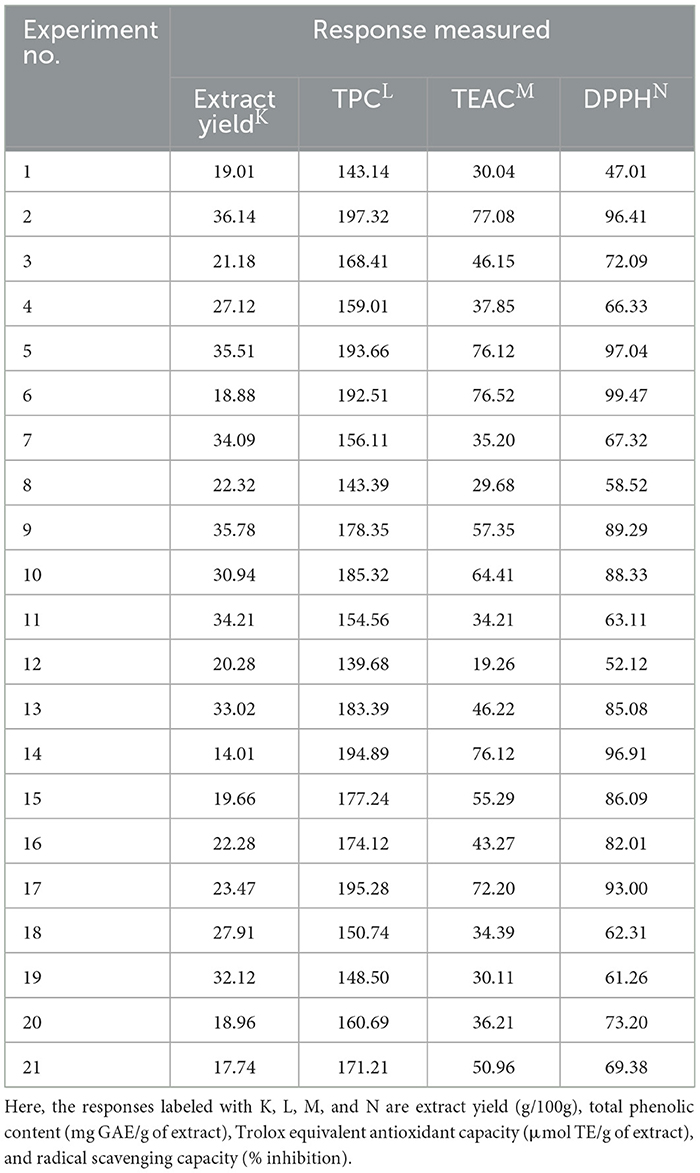
Table 2. Milk thistle extract yield and antioxidant activities observed during NaDES-ultrasound-assisted extraction.
In each factor or their interaction, the P ≤ 0.05 indicates significance. The fitness of the experimental layout applied was checked by measuring the lack of fitness probability. The nonsignificant (p ≥ 0.05) lack of fitness probability indicates the selected model fits well over the chosen ranges of extraction parameters (Table 3). In addition, the relative standard deviation/coefficient of variation (CV) observed against each factor applied, i.e., 0.97–3.35 % verifies the reliability and reproducibility of experimental results. Henceforth, the responses including milk thistle extract yield (g/100 g of the whole plant), TPC (g/100 g of the extract), TEAC (μmol TE/g of the extract) and RSC (% inhibition of DPPH) were modulated following second-order polynomial (Equations 1–4).
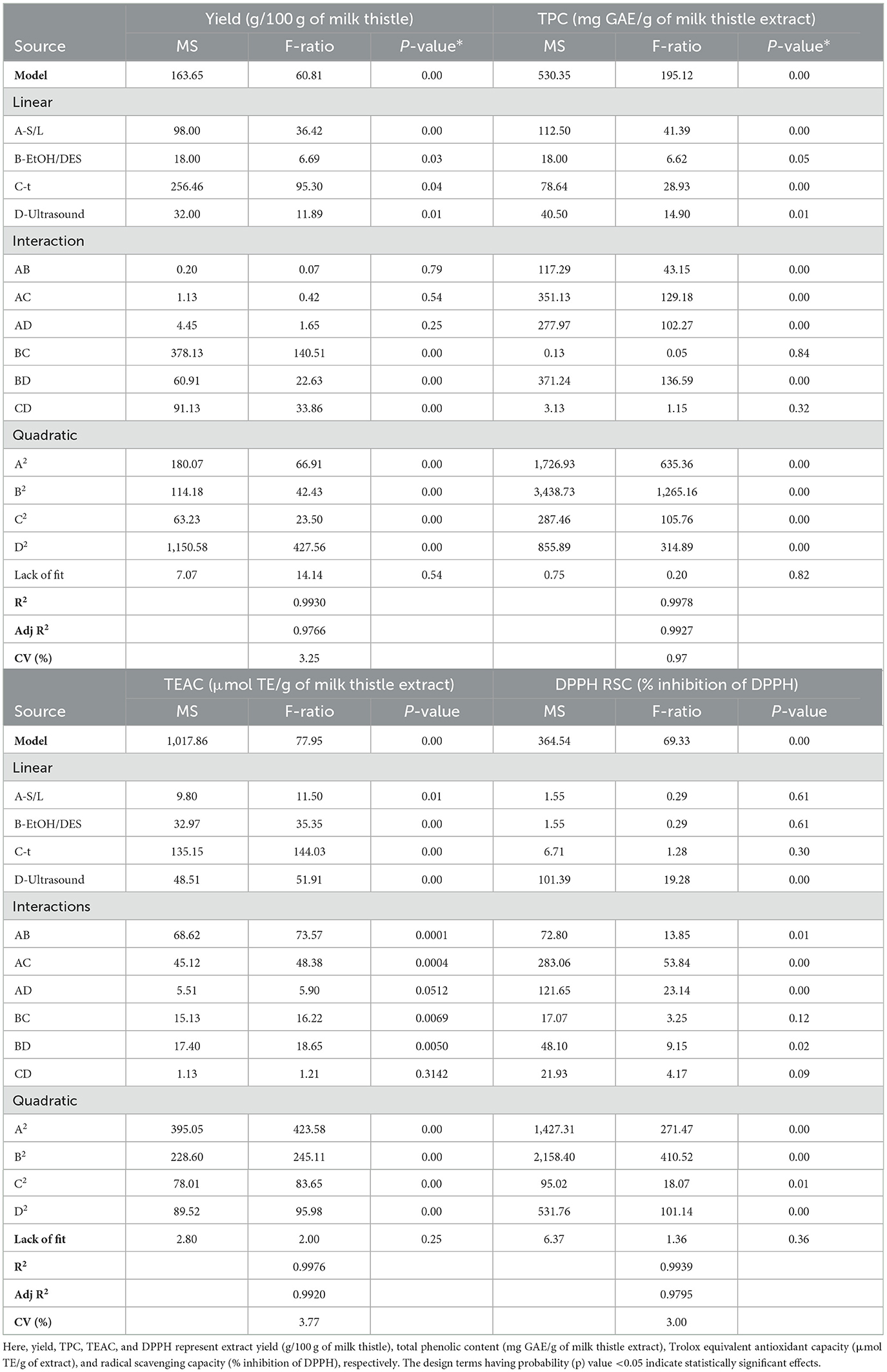
Table 3. Analysis of variance (ANOVA) for response followed during NaDES-ultrasound-assisted extraction.
The larger values for regression coefficients (R2) of extract yield (0.98), TPC (0.99), TEAC (0.99), and DPPH (0.99) show that the observed values of these responses agreed well with those predicted by Equations 1–4. Finally, it is clear that generated multiple regression (Equations 1–4) qualify basic statistical criteria and may give comprehensive details of the effect of a change in an independent variable.
Even more better synergism can be made by plotting the variation in response vs. change in any two experimental variables while keeping the rest of the two variables at the most feasible level (Yin et al., 2011).
3.3 Effect of extraction parameter
3.3.1 Solid-to-liquid ratio (S/L)
The analysis of variance for the assembled data as shown in Table 3 indicates that the milk thistle power (solid) to NaDES (S/L) ratio not only influenced the recovery of plant bioactives (crude extract) but also their phenolic content and subsequent antioxidant activities. It was interesting to note that the S/L represented by the term “A” in Equation (1) had a significant (p < 0.05) positive effect toward extract yield, but at the same time, it caused a decrease in the antioxidant quality of extracts (TPC, TEAC, and DPPH). Henceforth, a suitable S/L ratio is necessary just like the amount of the solvent applied during the conventional solvent extraction (Hromádková et al., 2008). Furthermore, the interaction between S/L and other parameters tested could be better understood by the three-dimensional plot (Figure 3). Figures 3A–C indicate an interaction between S/L vs. EtOH/DES ratio, extraction time, and ultrasound time. Figure 3A is the plot of the extract yield (g/100 g) with variation S/L and EtOH/DES while keeping the other two parameters (extraction and ultrasound time) constant. It is clear from Figure 3A that keeping S/L up to 6, and EtOH/HOH about 9 offers a higher recovery rate, and any drift from these conditions sharply decreases the extract yield. A similar kind of behavior has been observed by Wu et al. (2023) during the NaDES-ultrasound-assisted extraction of phenolics from kiwi fruit.
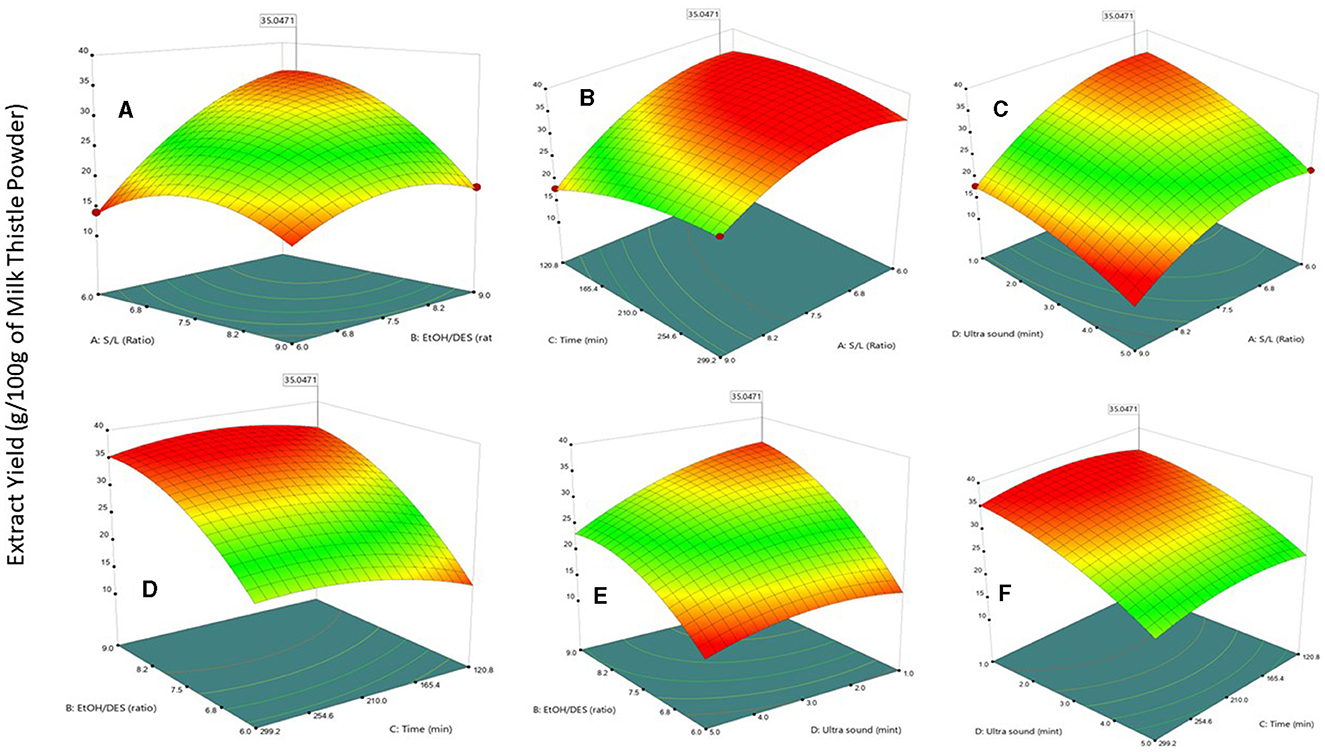
Figure 3. (A–F) Typical plots of extract yield (%) from milk thistle powder (MTP) observed under different NaDES-ultrasound-assisted extraction conditions.
3.3.2 EtOH/DES ratio
The higher viscosity and density of the Glu-CA-based deep-eutectic solvent caused a bottleneck problem regarding its utilization as an extraction solvent. To overwhelm this problem, the prepared NaDES, i.e., Glu-CA was premixed with ethanol, viz., EtOH/DES, and a look at the probability column of Table 3 indicates that the linear effect of EtOH/DES (B) was significant (p < 0.05) toward extract yield and all other responses investigated, i.e., TPC, TEAC, and DPPH. This kind of trend is difficult to understand, but it offers a large number of viscosity and density-related opportunities which arevery sensitive toward temperature changes. Second, this factor (EtOH/DES) controls the mass transfer of liberated bioactives (Arabshahi et al., 2007). The interactions of factor B with other parameters including BC BD, and BA significantly (p < 0.05) affected extract yield, TPC, TEAC, and DPPH. A better synergism of interaction can be made by the three-dimensional plot of these interactions in Figures 3A, D, E. A similar kind of behavior has been predicted by Wu et al. (2023) for deep eutectic and ultrasound-assisted extraction of phenolics.
3.3.3 Extraction time and ultrasound treatment
The effect of ultrasound treatment (D) on mass transfer and extraction efficiency was found to be significant (p ≤ 0.05) and similar was the case with extraction time (C) as shown in Table 3 and subsequent multiple regression (Equations 1–4). However, in both cases, prolonged extraction or ultrasound treatment could not offer parallel effects toward the liberation of phenolic compounds from MTP or even can deteriorate the antioxidant quality of extracts. The linear effect of both C and D were found to be significant (p < 0.05), whereas the interaction between two parameters, i.e., CD and that of extraction time (C) with solid/liquid ratio (A), i.e., AC were found to be nonsignificant. A similar kind of behavior can be established from Figures 3B, F. The presence of a sharp curvature in Figures 3C, E, F established that prolonged ultrasound treatment may cause adverse effects toward the liberation of milk thistle polyphenols. The increase in the extraction yield with ultrasound pretreatment mainly happens due to an increase in mass transfer and a decrease in the viscosity/density of the extraction solvent (Wu et al., 2023). The prolonged treatment may not be effective, and an increase in temperature beyond 56–60°C may deteriorate the plant bioactive (Ramirez-Coutiño et al., 2010; Cheba et al., 2016). Likewise, the flattened response of the extraction yield in Figures 3D, F indicates that further delay in extraction time is merely due to loss of resources.
3.4 Optimum and validation NaDES-ultrasound-assisted extraction
The overall trend regarding the recovery of milk thistle phenolics for their antioxidant activities reveals that deep eutectic solvents cannot offer parallel recovery rates perhaps for the viscosity and density constraints. The incorporation of ethanol and ultrasound waves was found to be much more effective for the production of cleaner and greener extracts from milk thistle whole plant powder. The results discussed in the previous section indicate that all of the extraction parameters investigated positively affected the recovery of phenolics up to a certain range, and a further increase in its value either reduces the antioxidant potential of extracts or merely imposes economic losses. This situation demands a more comprehensive optimization approach, to get a higher extraction yield without compromising the antioxidant characteristics and process cost. The multi-response optimization transforms all the responses into a dimensionless parameter “desirability” whose value should vary from 0 (non-ideal) to unity (highly favorable) solution (Montgomery, 2008; Kayacier et al., 2014). The multiresponse optimization of NaDES-ultrasound-assisted extraction revealed that milk thistle powder mixed with glucose/citric acid-based NADES (having EtOH/DES ratio 9.0) at L/S of 6.3 and exposure to ultrasound for 1.0 min offered 35 % crude bioactive having 397 mg GAE/g phenolics, 294 μmol TE/g TEAC and 93.65 percent inhibition of DPPH free radicals. Table 4 provides a comparison of validation experiments undertaken following the abovementioned conditions, and it is obvious from the collected data that the desirability approach can work as an intelligent tool to predict the response in a complex experimental design. A keen review of previous data indicates that NaDES have not been applied for the extraction of milk thistle; however, Wu et al. (2023) applied NaDES-ultrasound-assisted extraction for the recovery of phenolics from kiwi fruits and found that NaDES coupled with ultrasound agitation offer higher extraction efficiencies. Likewise, Athanasiadis et al. (2023) claimed choline chloride and glycerol as food grade DES which enhanced the antioxidant activities of phenolics extracted from peppermint. The NaDES applied during the present research, i.e., glucose/citric acid, is safer and more benign than choline chloride and glycerol. Besides, both components of NaDES i.e. glucose and citric acid are economical.

Table 4. The results of validation experiemnt carried out to check the effectiveness of applied NaDES-Ultrasound conditions.
3.5 Hepaprotective activities of milk thistle extracts
Table 5 discloses the hepaprotective potential of milk thistle extracts produced via NaDES-ultrasound-assisted extraction under optimum conditions. It can be observed from the assembled data that liver function enzymes such as aspartate aminotransferase (AST), alanine transaminase (ALT), and albumin are mostly followed to assess liver damage. The mean range of AST, ALP, and albumin in healthy albino mice was found to be 19 ± 2, 150 ± 10, and 3.5 ± 0.5, whereas the level of this biomarker in CCl4-induced hepatic liver was found to be 90 ± 5, 215 ± 5, and 2.89 ± 0.14. The oral administration of the milk thistle extract at 10, 25, and 50 mg of extract/Kg body weight (bw) of mice for T1, T2, and T3 improved liver function biomarkers in a concentration- and time-dependent manners. It was further observed that 10 mg of the milk thistle extract when administered (T1) could not significantly decline the AST and ALP, whereas the administration of higher doses (25 and 50 mg/Kg of body weight) caused a significant decrease in AST and ALP liver function enzymes. Previously, El-Gazayerly et al. (2014) administered 200 mg of the milk thistle extract prepared in ethanol and found AST, ALP, and albumin levels at the end of 10 days at 81.60 ± 11.52, 74.83 ± 12.38, and 3.85 ± 0.33, respectively. A similar kind of behavior has been reported by Khalili et al. (2021) who found the level of these biomarkers to be 118.0 ± 6.5, 72.5 ± 5.5, and 3.68 ± 0.05, respectively, after 28 days after treatment (DAT) of 200 mg of the milk thistle extract prepared in a conventional solvent methanol. The comparison indicates extracts prepared via NaDES-ultrasound-assisted extraction (current study) were much more efficient than those prepared by conventional extraction solvents.

Table 5. Hepatoprotective activities of milk thistle extracts obtained by NaDES-ultrasound-assisted extraction in albino mice.
4 Conclusions and limitations
An increase in ethanol content of glucose/citric acid-based NADES and ethanol (EtOH) mixture up to 9.0 increased the extract yield and subsequent antioxidant activities measured in terms of TEAC and DPPH radical scavenging, but further increase could not enhance the extraction yield at parallel rates. Similarly, a decrease in ultrasound time produced extracts of good antioxidant capacity. Extraction prolonging more than 120 min caused economic loss. The incorporation of ethanol in NaDES comprising glucose–citric acid (1:1) influenced the mass transfer rates and subsequently liberation of antioxidant phenolics. Furthermore, the milk thistle extracts obtained under optimum conditions were found to be more effective against CCl4-induced hepatic disorder in mice. An oral administration of milk thistle extract at 5.0 mg/kg body weight of mice reduced the alanine transaminase (ALT) level from 101.23 ± 2.33 to 50.35 ± 1.16 IU/L at the end of the 7-day trial. Like, the treatment improved the serum albumin level from 2.89 ± 0.07 to 3.57 ± 0.08 g/mL. It is worth mentioning that glucose and or citric acid have been an integral part of food products, and applying NaDES comprising these as HBA/HDB may provide a benign method for the extraction of phenolics. It should be mentioned here that both and glucose and citric acid are economical and easily available as compared to other HBDs/HBA, so the application of glucose–citric acid-based NaDES as the extraction solvent does not increase the cost of the extraction process. A more detailed study can be undertaken to compare the hepatoprotective activities of various milk thistle formulations available in the market. In addition, a complete phytochemistry of NaDES-ultrasound-assisted extracts of milk thistle need to be established to justify the observations.
Data availability statement
The original contributions presented in the study are included in the article/supplementary material, further inquiries can be directed to the corresponding author.
Ethics statement
The animal studies were approved by Ethical Committee Government College University Lahore. The studies were conducted in accordance with the local legislation and institutional requirements. Written informed consent was obtained from the owners for the participation of their animals in this study.
Author contributions
NN: Writing – original draft, Methodology, Formal analysis. SA: Writing – review & editing, Validation. AR: Writing – original draft, Resources, Funding acquisition. AA: Writing – original draft. MM: Writing – review & editing, Writing – original draft, Supervision, Software, Project administration, Conceptualization.
Funding
The author(s) declare that no financial support was received for the research, authorship, and/or publication of this article. However, financial support was provided by the Higher Education Commission (HEC) for the preparation of natural deep eutectic solvents under NRPU project 17549. Likewise, ORIC, GC University Lahore provided funds to purchase some chemicals.
Conflict of interest
The authors declare that the research was conducted in the absence of any commercial or financial relationships that could be construed as a potential conflict of interest.
Publisher's note
All claims expressed in this article are solely those of the authors and do not necessarily represent those of their affiliated organizations, or those of the publisher, the editors and the reviewers. Any product that may be evaluated in this article, or claim that may be made by its manufacturer, is not guaranteed or endorsed by the publisher.
References
Abderrahim, F., Estrella, S., Susin, C., Arribas, S. M., Gonzalez, M. C., and Condezo-Hoyos, L. (2011). The antioxidant activity and thermal stability of lemon verbena (Aloysia triphylla) infusion. J. Med. Food 14, 517–527. doi: 10.1089/jmf.2010.0102
Acosta-Estrada, B. A., Gutiérrez-Uribe, J. A., and Serna-Saldívar, O. S. (2014). Bound phenolics in foods, a review. Food Chem. 152, 46–55. doi: 10.1016/j.foodchem.2013.11.093
Adam, M., Dobias, P., Eisner, A., and Ventura, K. (2009). Extraction of antioxidants from plants using ultrasonic methods and their antioxidant capacity. J. Sep. Sci. 32, 288–294. doi: 10.1002/jssc.200800543
Andrade, K. S., Goncalvez, R. T., Maraschin, M., Ribeiro-do-Valle, R. M., Martinez, J., and Ferreira, R. S. (2012). Supercritical fluid extraction from spent coffee grounds and coffee husks: antioxidant activity and effect of operational variables on extract composition. Talanta 88, 544–552. doi: 10.1016/j.talanta.2011.11.031
Anh-Dao, L.-T., Minh-Huy, D., Bui-Phuc, T., Nhut-Truong, N., Tu-Chi, T., Thi-Hoa, L., et al. (2024). Determination of caffeine, chlorogenic acid, total phenolic contents, and antioxidant capacities for Arabica and Robusta coffee from Vietnam. Analyt. Lett. 2024, 1–15. doi: 10.1080/00032719.2024.2304126
Arabshahi, D. S, Devi, D. V., and Urooj, A. (2007). Evaluation of antioxidant activity of some plant extracts and their heat, pH and storage stability. Food Chem. 100, 1100–1105. doi: 10.1016/j.foodchem.2005.11.014
Arts, I. C., and Hollman, P. C. (2005). Polyphenols and disease risk in epidemiologic studies. The American journal of clinical nutrition 81, 317S−325S. doi: 10.1093/ajcn/81.1.317S
Athanasiadis, V., Palaiogiannis, D., Grigorakis, S., Bozinou, E., Lalas, S. I., and Makris, P. D. (2023). Food-grade deep eutectic solvent extraction of antioxidant polyphenols from peppermint (Mentha × piperita L.): screening, optimization and metabolite profile. J. Appl. Res. Med. Aromat. Plants 33:100456. doi: 10.1016/j.jarmap.2022.100456
Basak, B., Patil, S., Kumar, R., Ha, G.-S., Park, Y.-K., Ali Khan, M., et al. (2022). Integrated hydrothermal and deep eutectic solvent-mediated fractionation of lignocellulosic biocomponents for enhanced accessibility and efficient conversion in anaerobic digestion. Bioresour. Technol. 351;127034. doi: 10.1016/j.biortech.2022.127034
Bimakr, M., Rahman, R. A., Taip, F. S., Adzahan, N. M., Sarker, M. Z., and Ganjloo, A. (2013). Supercritical carbon dioxide extraction of seed oil from winter melon (Benincasa hispida) and its antioxidant activity and fatty acid composition. Molecules 18, 997–1014. doi: 10.3390/molecules18010997
Cheba, B. A., Zaghloul, T. I., El-Mahdy, A. R., and El-Massry, H. M. (2016). Effect of pH and temperature on Bacillus sp. R2 chitinase activity and stability. Procedia Technol. 22, 471–477. doi: 10.1016/j.protcy.2016.01.092
Corchete, P. (2008). “Silybum marianum (L.) Gaertn: the source of silymarin,” in Bioactive Molecules and Medicinal Plants (Cham: Springer), 123–148. doi: 10.1007/978-3-540-74603-4_6
Cvjetko Bubalo, M., Curko, N., Tomašević M, Kovačević Ganić K., and Radojčić Redovniković, I. (2016). Green extraction of grape skin phenolics by using deep eutectic solvents. Food Chem. 200, 159–166. doi: 10.1016/j.foodchem.2016.01.040
El-Gazayerly, O. N., Makhlouf, A. I. A., Soelm, A. M. A., and Mohmoud, A. M. (2014). Antioxidant and hepatoprotective effects of silymarin phytosomes compared to milk thistle extract in CCl4 induced hepatotoxicity in rats. J. Microencapsul. 31, 23–30. doi: 10.3109/02652048.2013.805836
Hajimahmoodi, M., Oveisi, M. R., Sadeghi, N., Jannat, B., Hadjibabaie, M., Farahani, E., et al. (2008). Antioxidant properties of peel and pulp hydro extract in ten Persian pomegranate cultivars. Pak. J. Biol. Sci. 11, 1600–1604. doi: 10.3923/pjbs.2008.1600.1604
Hromádková, Z., KoÅ¡t’álová, Z., and EbringerovÃ!, A. (2008). Comparison of conventional and ultrasound-assisted extraction of phenolics-rich heteroxylans from wheat bran. Ultrason. Sonochem. 15, 1062–1068. doi: 10.1016/j.ultsonch.2008.04.008
Ihsan, S., Hasany, S. M., Akram, S., Adnan, A., and Mushtaq, M. (2021). “Chapter 19 - Silybins: Antiviral liver analeptics,” in A Centum of Valuable Plant Bioactives, eds. M. Mushtaq, F. Anwar (Cambridge, MA: Academic Press), 445–465.
Kayacier, A., Yüksel, F., and Karaman, S. (2014). Response surface methodology study for optimization of effects of fiber level, frying temperature, and frying time on some physicochemical, textural, and sensory properties of wheat chips enriched with apple fiber. Food Bioproc. Technol. 7, 133–147. doi: 10.1007/s11947-013-1096-6
Kedare, S. B., and Singh, R. P. (2011). Genesis and development of DPPH method of antioxidant assay. J. Food Sci. Technol. 48, 412–422. doi: 10.1007/s13197-011-0251-1
Khalili, A., Fallah, P., Hashemi, S. A., Ahmadian-Attari, M. M., Jamshidi, V., Mazloom, R., et al. (2021). New mechanistic insights into hepatoprotective activity of milk thistle and chicory quantified extract: the role of hepatic Farnesoid-X activated receptors. Avicenna J. Phytomed 11, 367–379.
Khan, I., Khattak, H. U., Ullah, I., and Bangash, K. F. (2007). Study of the physicochemical properties of Silybum marianum Saeed oil. J.-Chem. Soc. Pakistan 29:545.
Kiradoo, M. M., and Srivastava, M. (2010). A comparative study on the efficacy of two lamiaceae plants on egg-laying performance by the pulse beetle Callosobruchus chinensis Linn. (Coleoptera: Bruchidae). J. Biopestic. 3:590.
Kumar, R., Liu, C., Ha, G.-S., Kim, K. H., Chakrabortty, S., Tripathy, S. K., et al. (2023). A novel membrane-integrated sustainable technology for downstream recovery of molybdenum from industrial wastewater. Resour. Conservat. Recycl. 196:107035. doi: 10.1016/j.resconrec.2023.107035
Li, F., Yang, L., Zhao, T., Zhao, J., Zou, Y., Zou, Y., et al. (2012). Optimization of enzymatic pretreatment for n-hexane extraction of oil from Silybum marianum seeds using response surface methodology. Food Bioprod. Process. 90, 87–94. doi: 10.1016/j.fbp.2011.02.010
Luo, J., Tian, C., Xu, J., and Sun, Y. (2009). Studies on the antioxidant activity and phenolic compounds of enzyme-assisted water extracts from Du-zhong (Eucommia ulmoides Oliv.) leaves. J. Enzyme Inhib. Med. Chem. 24, 1280–1287. doi: 10.3109/14756360902829741
Morelli, L. L., and Prado, M. A. (2012). Extraction optimization for antioxidant phenolic compounds in red grape jam using ultrasound with a response surface methodology. Ultrason. Sonochem. 19, 1144–1149. doi: 10.1016/j.ultsonch.2012.03.009
Mukhtar, S., Xiaoxiong, Z., Khalid, W., Moreno, A., and Lorenzo, M. J. (2023). In vitro antioxidant capacity of purified bioactive compounds in milk thistle seed (Silybum marianum) Along with Phenolic Profile. Food Anal. Methods 16, 651–663. doi: 10.1007/s12161-023-02449-w
Mushtaq, M., Butt, F. W., Akram, S., Ashraf, R., and Ahmed, D. (2022). Deep eutectic liquids as tailorable extraction solvents: a review of opportunities and challenges. Crit. Rev. Anal. Chem. 23, 1–27. doi: 10.1080/10408347.2022.2125284
Mushtaq, M., Sultana, B., Bhatti, H., and Asghar, M. (2014). RSM based optimized enzyme-assisted extraction of antioxidant phenolics from underutilized watermelon (Citrullus lanatus Thunb.) rind. J. Food Sci. Technol. 52, 1–9. doi: 10.1007/s13197-014-1562-9
Natanzi, A. E., Ghahremani, M. H., Monsef-Esfahani, H. R., Minaei, B., Nazarian, H., and Sabzevari, O. (2009). An experimental model for study of the hepatoprotective activity of Nasturtium officinale (Watercress) against acetaminophen toxicity using in situ rat liver system. Eur. J. Scientif. Res. 38, 556–564.
Ojeda, G. A., Vallejos, M. M., Sgroppo, S. C., Sánchez-Moreno, C., and de Ancos, B. (2023). Enhanced extraction of phenolic compounds from mango by-products using deep eutectic solvents. Heliyon 9:e16912. doi: 10.1016/j.heliyon.2023.e16912
Qu, W., Pan, Z., and Ma, H. (2010). Extraction modeling and activities of antioxidants from pomegranate marc. J. Food Eng. 99, 16–23. doi: 10.1016/j.jfoodeng.2010.01.020
Rababah, T. M., Banat, F., Rababah, A., Ereifej, K., and Yang, W. (2010). Optimization of extraction conditions of total phenolics, antioxidant activities, and anthocyanin of oregano, thyme, terebinth, and pomegranate. J. Food Sci. 75, C626–632. doi: 10.1111/j.1750-3841.2010.01756.x
Ramirez-Coutiño, L., Espinosa-Marquez, J., Peter, M. G., and Shirai, K. (2010). The effect of pH on the production of chitinolytic enzymes of Verticillium fungicola in submerged cultures. Bioresour. Technol. 101, 9236–9240. doi: 10.1016/j.biortech.2010.06.160
Saeed, N., Khan, M. R., and Shabbir, M. (2012). Antioxidant activity, total phenolic and total flavonoid contents of whole plant extracts Torilis leptophylla L. BMC Complement. Altern. Med. 12, 221. doi: 10.1186/1472-6882-12-221
Saien, J., Bahiraei, M., and Jafari, F. (2023). A green hydrophobic deep eutectic solvent for extraction of phenol from aqueous phase. Sci. Rep. 13:17449. doi: 10.1038/s41598-023-44600-x
Shaker, E., Mahmoud, H., and Mnaa, S. (2010). Silymarin, the antioxidant component and Silybum marianum extracts prevent liver damage. Food Chem. Toxicol. 48, 803–806. doi: 10.1016/j.fct.2009.12.011
Smith, E. L., Abbott, A. P., and Ryder, S. K. (2014). Deep eutectic solvents (DESs) and their applications. Chem. Rev. 114, 11060–11082. doi: 10.1021/cr300162p
Stavikova, L., Polovka, M., Hohnova, B., Karasek, P., and Roth, M. (2011). Antioxidant activity of grape skin aqueous extracts from pressurized hot water extraction combined with electron paramagnetic resonance spectroscopy. Talanta 85, 2233–2240. doi: 10.1016/j.talanta.2011.07.079
Tohamy, A.O, Elgammal, E.-S., and Taher, A. F. E.-R. (2023). Green extraction of silymarin from Milk thistle seeds and its encapsulation using the spray drying method. Egypt. J. Chem. 66, 485–497.
Wu, D.-T., Deng, W., Li, J., Geng, J.-L., Hu, Y.-C., Zou, L., et al. (2023). Ultrasound-assisted deep eutectic solvent extraction of phenolic compounds from thinned young kiwifruits and their beneficial effects. Antioxidants 12:1475. doi: 10.3390/antiox12071475
Yin, X., You, Q., and Jiang, Z. (2011). Optimization of enzyme assisted extraction of polysaccharides from Tricholoma matsutake by response surface methodology. Carbohydr. Polym. 86, 1358–1364. doi: 10.1016/j.carbpol.2011.06.053
Keywords: NaDES, extraction solvent, multi-response optimization, ultrasound pretreatment, hepatoprotective activity
Citation: Nasrullah N, Akram S, Rashid A, Adnan A and Mushtaq M (2024) Natural deep eutectic liquid and ultrasound-assisted extraction of milk thistle phenolics and their hepatoprotective activities. Front. Sustain. Food Syst. 8:1375076. doi: 10.3389/fsufs.2024.1375076
Received: 23 January 2024; Accepted: 01 April 2024;
Published: 22 April 2024.
Edited by:
Lourdes Maria Correa Cabral, Brazilian Agricultural Research Corporation (EMBRAPA), BrazilReviewed by:
Pedro Ferreira Santos, University of Minho, PortugalRamesh Kumar, Hanyang University, Republic of Korea
Copyright © 2024 Nasrullah, Akram, Rashid, Adnan and Mushtaq. This is an open-access article distributed under the terms of the Creative Commons Attribution License (CC BY). The use, distribution or reproduction in other forums is permitted, provided the original author(s) and the copyright owner(s) are credited and that the original publication in this journal is cited, in accordance with accepted academic practice. No use, distribution or reproduction is permitted which does not comply with these terms.
*Correspondence: Muhammad Mushtaq, bXVoYW1tYWQubXVzaHRhcUBnY3UuZWR1LnBr
 Nabiha Nasrullah
Nabiha Nasrullah Sumia Akram
Sumia Akram Ayoub Rashid1
Ayoub Rashid1 Ahmad Adnan
Ahmad Adnan Muhammad Mushtaq
Muhammad Mushtaq